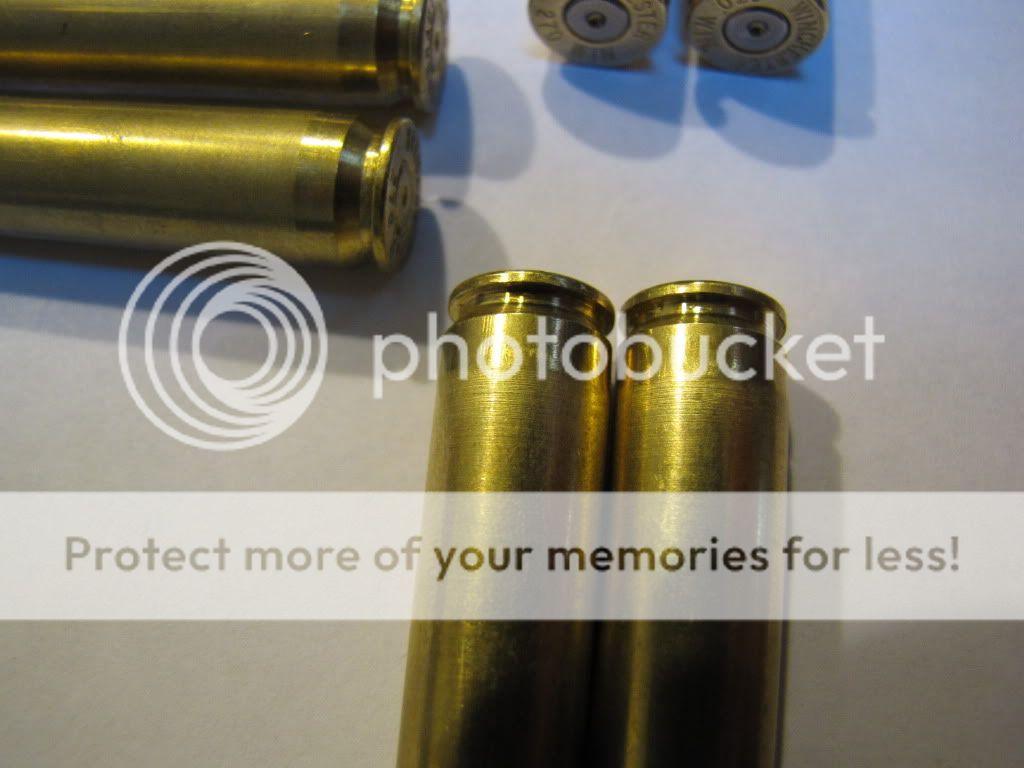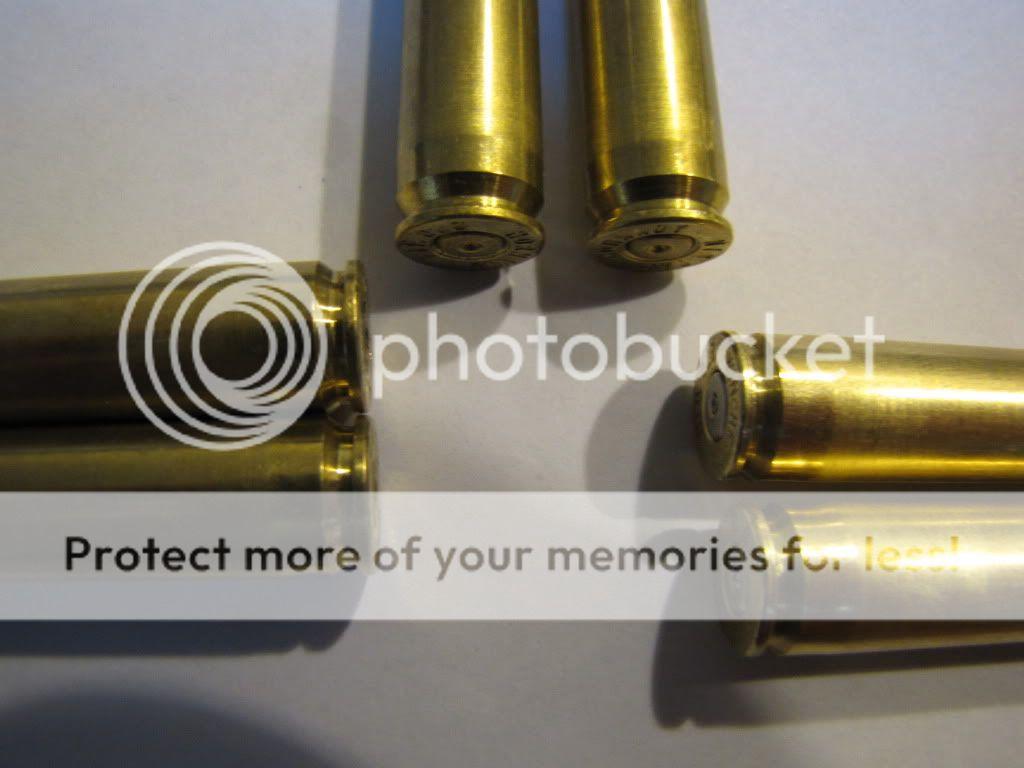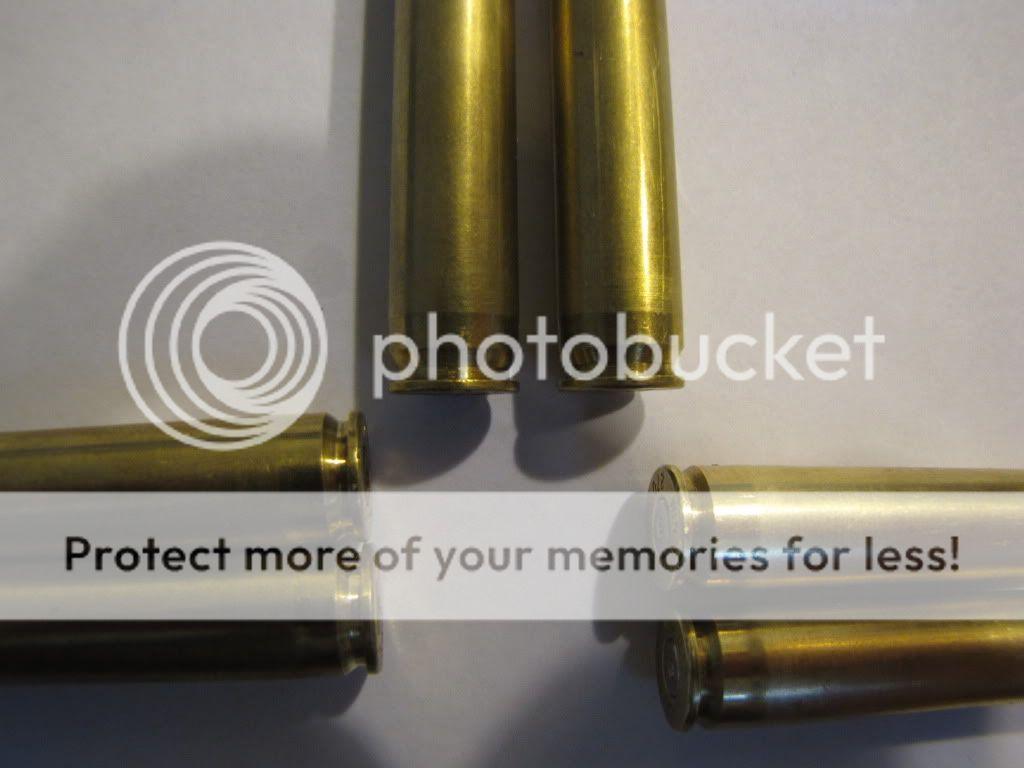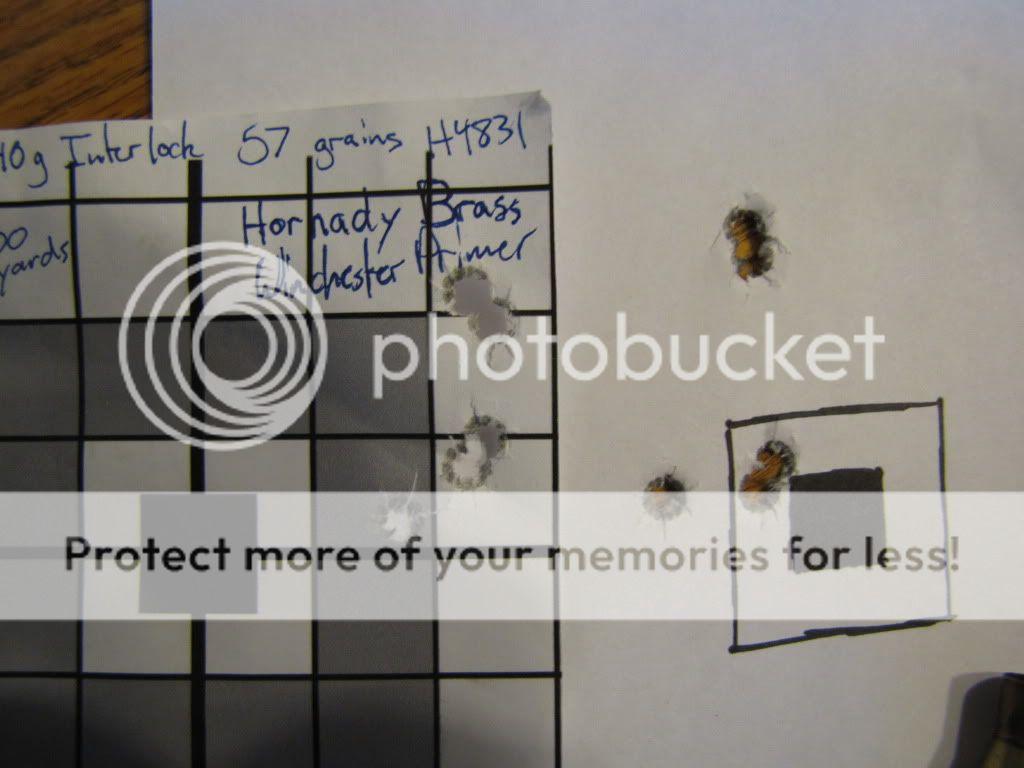Ever since I have started loading for my M700 ADL in 270, my brass has been developing a ring around the bottom of the casing. It happens whether the brass is brand new or been loaded 5 times. Ive made sure that I am well under max pressure and all of that, but still, it is leaving a ring around the bottom of my brass, and if you feel really closely, you can actually feel a slight bulge. I am not experiencing any signs of pressure, and I think that the small bulges could have an adverse affect on the accuracy with this rifle. I uploaded a photo of the groups that I will commonly get. Any idea why? the first shot down and to the left is the fouling shot. Both groups are totally different loads. Different primers, different powder, different brass, different bullets, and so its either my gun or me...But my biggest worry is the brass. Any help is greatly appreciated! Thank you!








